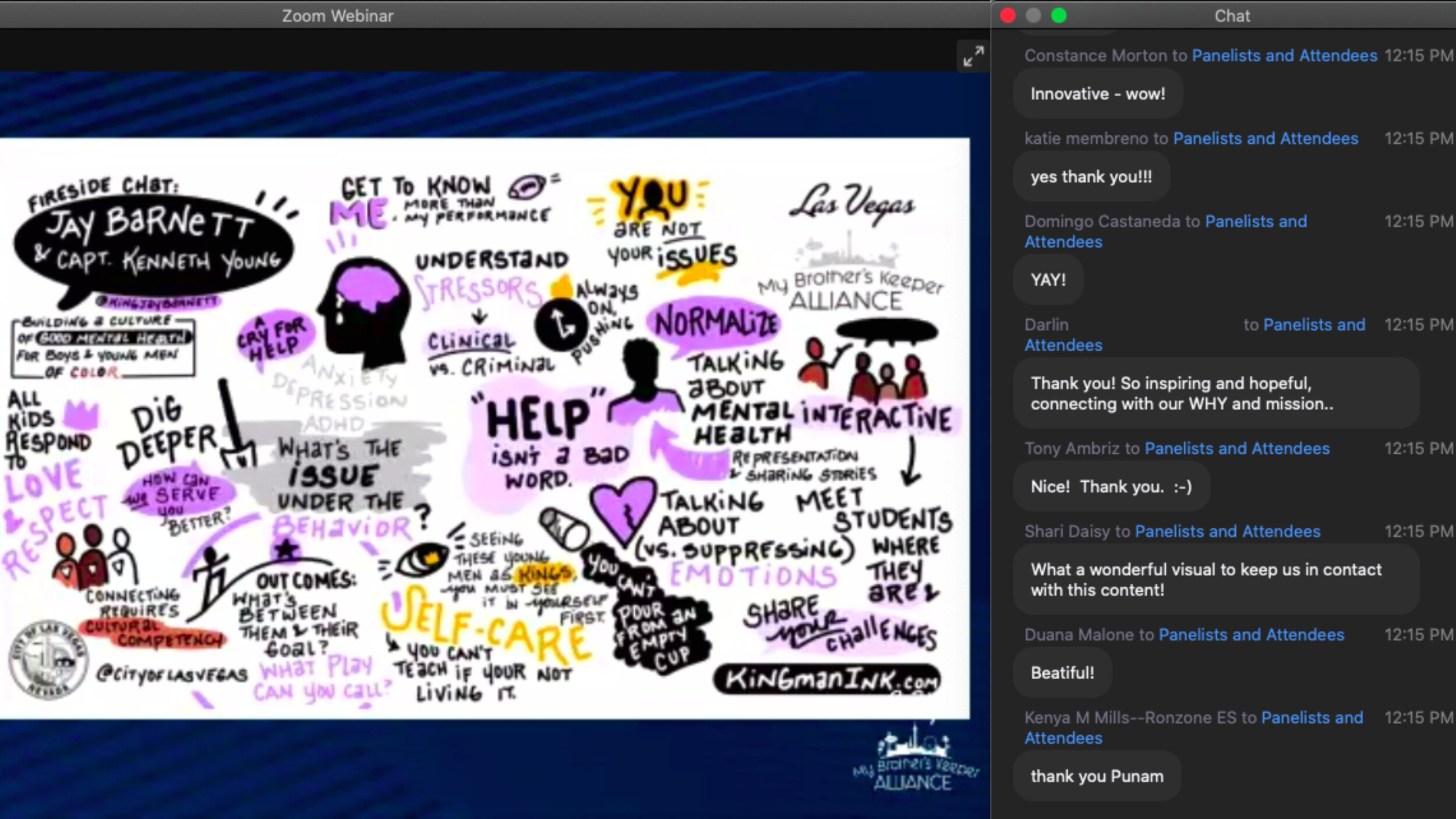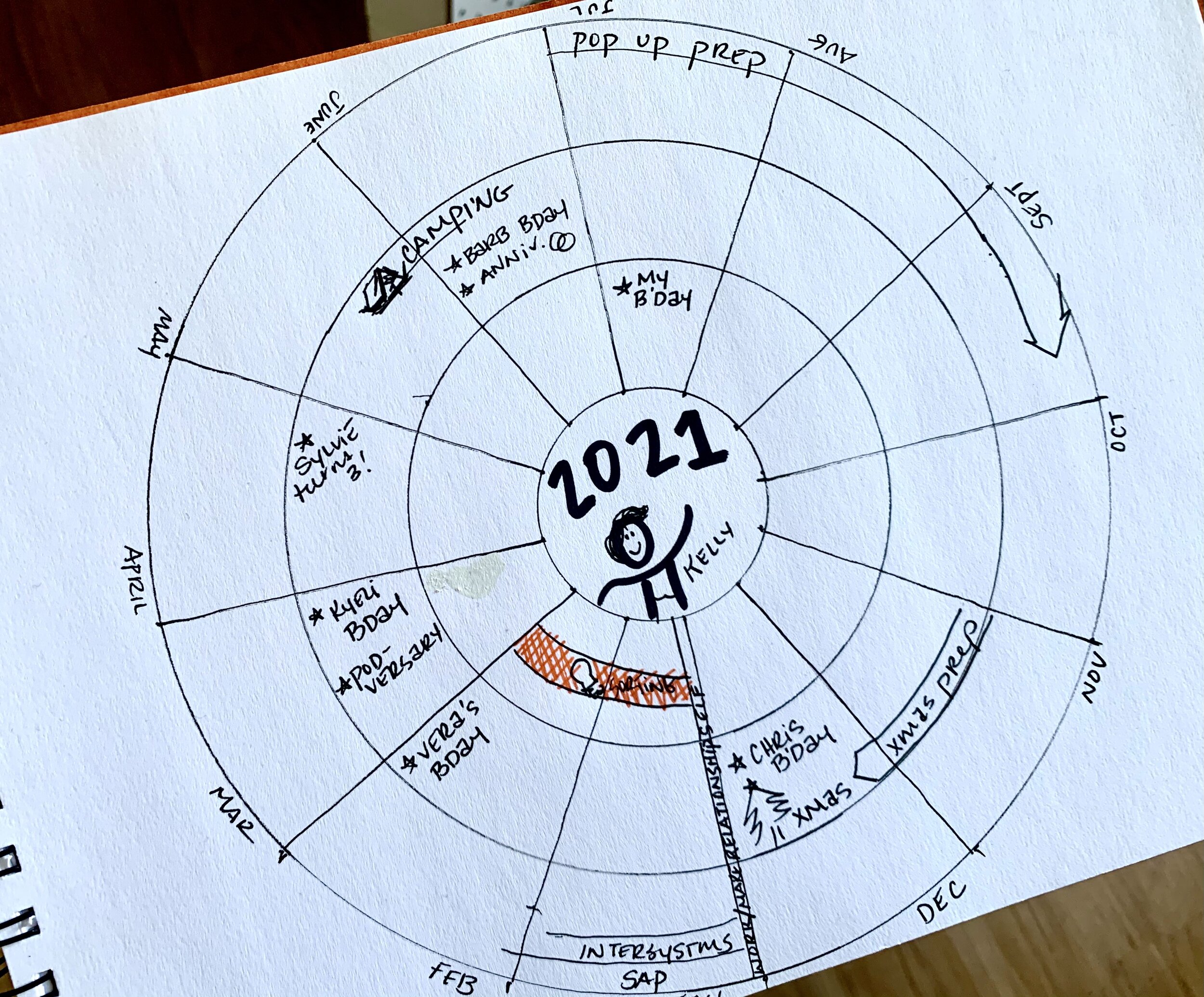The Challenge: How to make a virtual event as productive as possible?
Last week, Kingman Ink joined an annual conference hosted by the Las Vegas My Brother’s Keeper Alliance. This event gathers all stakeholders, from legislators to educators, to work on improved educational and mental-health outcomes for boys and young men of color. Although this year’s event was virtual, the organizers wanted to keep the discussion vigorous.
The Solution: Drive the discussion with graphic recording
We captured sessions in a series of graphic recordings. The completed images were displayed during the Q&A portion, maximizing impact and giving attendees a refresh of the big themes. Using these colorful summaries as a reference, attendees had more engaging questions and deeper discussions.
More than just note-taking, the boards were evocative — with visual cues and imagery that captured both the information and its impact. Tapping into an emotional connection with what’s being said makes for a more engaged audience.
Participants also received the digital images post-event. Graphic recording is great for information retention, but it’s also a powerful communications tool. Sharing the images on social media helps spread important messages further.
For more information about how Kingman Ink can draw in your attendees, contact us.
The Las Vegas My Brother’s Keeper Alliance is part of the My Brother’s Keeper initiative, launched by President Barack Obama in 2014. It’s focused on community approaches to racial justice, education equity, and building a culture of mental well-being for boys and young men of color.
















